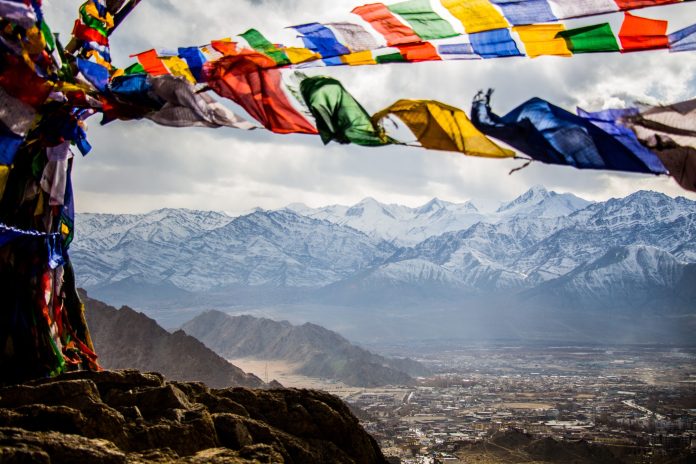Nepal, which has some of the highest peaks in the world, gives daring travelers the possibility to live above 6,000 meters, where the atmosphere is thin, the surroundings are bizarre, and the human spirit is tested to the absolute limit. This high-altitude environment is a mesmerizing tapestry of beauty, difficulty, and resiliency nestled among the towering giants of the Himalayas.
Where Few Risk Going
In Nepal, life is mostly found in the high-altitude hiking areas, such as the Everest and Annapurna mountains. Indigenous populations known as Sherpas and Gurungs have called this place home for many centuries, adjusting to the harsh surroundings and enjoying a way of life centered around the mountains.
A Strenuous Ascent
Achieving these heights is a mentally and physically challenging task for trekkers and mountaineers. Each step becomes deliberate as you ascend higher, the air gets drier, and the temperature drops. Trekkers must move slowly and deliberately to give their bodies time to acclimate to the severe altitudes to prevent altitude sickness.
Beautiful Landscapes


Those who brave the altitude are rewarded with an exotic setting that seems to have sprung straight out of a dream. Snow-covered peaks, glacier-carved valleys, and pure alpine lakes have an awe-inspiring and stark beauty. Awe-inspiring displays of pink and orange are painted on the sky by the mountains at dawn and dusk.
The High Himalayan Way of Life
A remarkable study of human resiliency, cultural diversity, and environmental problems may be found in Nepal’s life above 6000 meters. The lonely, harsh areas of the Himalayas at high altitudes are also home to people with distinctive lifestyles that have developed over many years.
Sherpas Mountain Experts
A native ethnic group of the high Himalayas, the Sherpas are famous for their climbing skills and have established themselves as crucial porters and guides for trekkers and climbers. They are ideal companions for people traveling into this harsh environment because of their extraordinary physical endurance, in-depth understanding of the area, and experience with the difficulties of high-altitude living.
The mountains are the center of Sherpa culture. They are more than simply guides; they are also farmers, dealers, and artisans who have adapted their way of life to the challenging environment. Their vibrant cultures, timeless customs, and tight-knit communities serve as examples of the human spirit’s tenacity. Their style of life is characterized by self-sufficiency and simplicity.
They eat, dress, and shelter themselves using yak milk, meat, and wool, which they obtain from their herds. They provide a singular viewpoint on the connections between nature and humans thanks to the clean and distant areas they travel through.
High-Altitude Living Challenges
There are many difficult hurdles to overcome when living over 6000 meters. The human body might suffer from the effects of thin air, low oxygen levels, and intense cold. Many high-altitude cultures have thus evolved to cope with these circumstances over many generations.
Mobile Herders
Nomadic herders known as “yak herders” or “shepherds” care for their herds of yaks and sheep in the isolated areas of the high Himalayas. These resilient people have a nomadic lifestyle, shifting their cattle between high-altitude pastures in the spring and summer and lower elevations in the coldest months of the year.
Sustainability and Conservation
The high Himalayas are especially susceptible as the globe struggles to cope with the repercussions of climate change. The delicate ecosystem in this area is in danger due to glacial retreat, shifting weather patterns, and the prospect of more frequent natural disasters. Sustainable practices and conservation initiatives are becoming more and more crucial.
To protect this distinctive habitat, local communities, environmental organizations, and the government of Nepal are cooperating. The larger goal of protecting the high Himalayas for future generations includes responsible hiking techniques, trash management programs, and endeavors to decrease carbon footprints.
What It’s Like at a Tea House
Trekkers who go through high-altitude areas have the option of staying in tea houses, simple lodges that offer basic amenities amidst the mountains. Amid the seclusion, these tea rooms provide hot meals, a comfortable place to stay, and the company of other tourists.
Challenges and Successes
There are several difficulties in life over 6000 meters, such as intense cold, lack of oxygen, and unpredictability of the weather. However, many people find the attraction of reaching these mountains alluring. Whether it’s Everest, Annapurna, or another daunting summit, the rush of reaching the top is an accomplishment that speaks volumes about human desire and tenacity.
Maintaining the Vulnerable Ecosystem
The delicate ecosystem of the high Himalayas is becoming more and more vulnerable due to climate change. The delicate equilibrium of this environment is in danger as a result of the retreating glaciers. To guarantee that future generations may continue to enjoy the pleasures of life above 6,000 meters, conservation measures and ethical trekking methods are crucial.
A Peek at the Divine
One cannot help but get a strong sense of connectedness to nature when in Nepal’s high Himalayas. The line between the physical and the spiritual melds in this setting, and the magnificence of the mountains stirs awe and reflection.
In summary: A Trip Beyond the Imagination
The commonplace gives way to the exceptional in Nepal’s life above 6000 meters. A place where the human spirit is put to the test, where the magnificence of nature leaves an imprint, and where the pursuit of adventure and self-discovery soars to new levels, both literally and figuratively. Entering this world is a trip beyond all comprehension, where the rewards are as immense and breathtaking as the Himalayas themselves.





